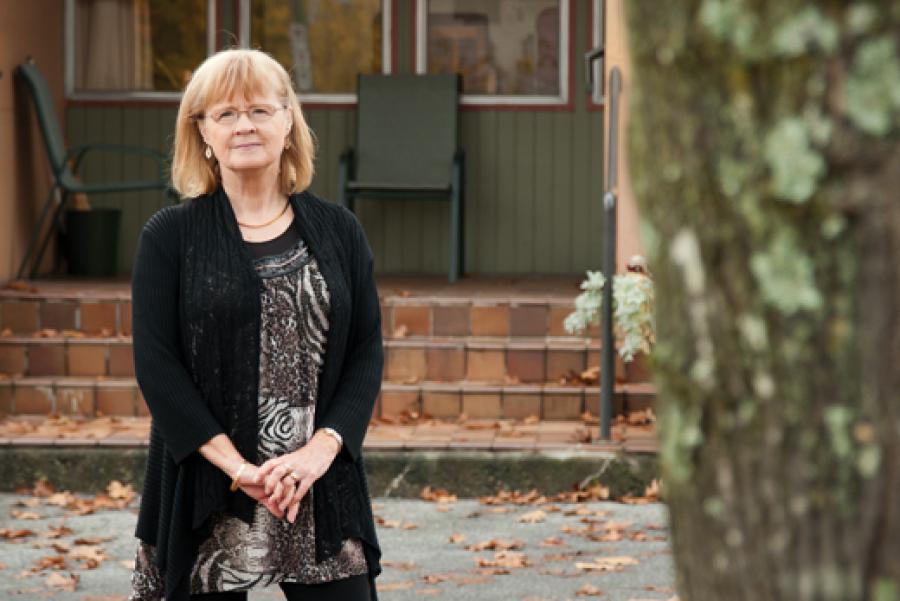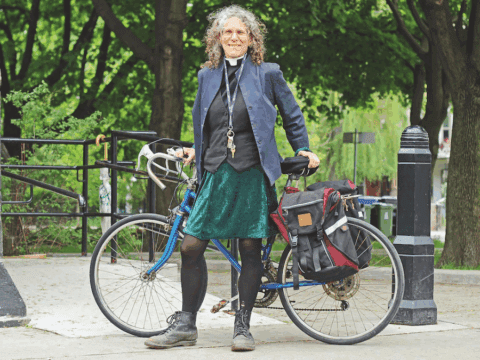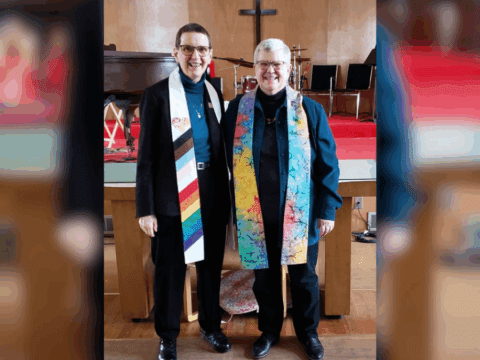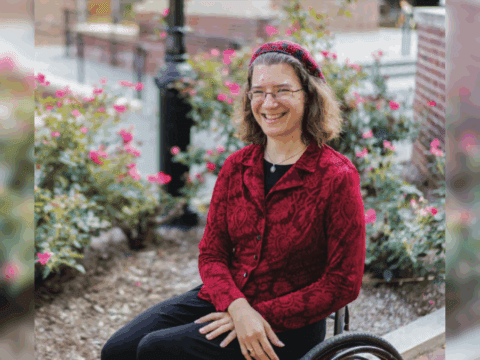Late one September afternoon in 1969, as the warm sun dipped over Sydney, Australia, a trembling Bernadette Dumas approached her parents’ bedroom in Strathfield, the family’s red-brick mansion. In her soft voice, she told them that she’d gone to the doctor earlier that day and — “Don’t tell me you’re pregnant,” her father interjected. Bernadette, 19, lowered her head and nodded.
Bernadette stayed silent. She had learned obedience from her mother, who sat down on the bedroom couch, tears rolling down her cheeks. Her father, staunchly Catholic, began pacing. He launched into a tirade about how Bernadette better not be thinking about having an abortion. And she better not tell anyone about this. Ever.
But Bernadette had already spoken to her boyfriend, Michael, and his family. They arrived at Strathfield a few hours later, surprised but supportive. With reputations to keep up, Bernadette’s parents offered warm smiles and drinks behind closed doors in the living room, so none of Bernadette’s nine siblings could overhear. Michael’s parents hugged Bernadette and pledged their support. A grandchild was on the way.
The pregnancy was an accident. Michael was Bernadette’s one and only boyfriend, and they had had sex just once. It was an era when young women were expected to be chaste — when what passed for sex education in public schools was a Walt Disney film about menstruation. At the Catholic boarding school for girls that Bernadette attended, students were taught nothing about sex. Neither Bernadette nor Michael knew about contraceptives.
In those days, Bernadette’s long, mousy hair drooped over her shoulders, and her bright blue eyes were hidden behind glasses. She was not loose, hardly a slut, but she would be taken for both if anyone learned she was pregnant.
The next day, without Bernadette’s knowing, her father called Michael’s family and told a lie. It was all a false alarm, he said. There would be no grandchild.
Bernadette received a stern warning never to speak to Michael or his family again. Her parents offered her a choice: Keep the baby, but cut off ties with everyone in Australia and make a new life supporting herself. Or leave the decision-making to them and let everything return to normal. Bernadette chose normal. She began teachers’ college, careful not to eat too much for fear of showing a bump, and her parents prepared for a six-month family “vacation” in a hideaway house in Vancouver. Nobody would ever expect her father, an anti-Protestant businessman who’d become wealthy running a chain of pubs, to be hiding a daughter in a United Church-run maternity home an ocean away.
So, four months pregnant, Bernadette — “numb as a zombie,” she recalls — knocked on the door of 7401 Sussex Avenue in Burnaby, B.C. It was a chilly November afternoon. Mrs. Ethel Packham, a petite woman with thick cat’s-eye glasses, opened the door to the unassuming bungalow and ushered the girl and her parents into her office. Bernadette sat in a large cushiony chair that turned out to be the place for many discussions about adoption. She could sense other women nearby, like ghosts in the walls, but she couldn’t see them. Gazing kindly over her wooden desk, Mrs. Packham offered a routine greeting: “Welcome, we hope you’ll be comfortable.” Bernadette would be one of 123 women institutionalized at the home that year.
In the last century, the United Church and its predecessors ran five maternity homes, as well as other social service facilities that may have dealt with adoptions but were not designated as maternity homes. The first, Victor Home, was an extension of the Fred Victor Mission on Jarvis Street in Toronto, built in 1901. It has since evolved into the Massey Centre for Women. Promotional materials from the early days of the Victor Home describe its purpose as aiding “the problem of the unfortunate girl” and tending to “the plight of the unwed mother” so her offspring did not wind up in orphanages. So began a century of church involvement in the adoption business and the institutionalization of women.
Now, perhaps inevitably, the pushback has started. Thanks mainly to social networking, women who passed through maternity homes are gathering their memories and confronting the churches that ran them. Many claim they were coerced into surrendering their newborns. A growing movement of mothers is calling for church and government probes into historic adoption practices. This comes on the heels of similar demands by advocates in Australia that sparked a commitment to a national apology from the federal government last June, as well as separate apologies from nursing associations and churches. Meanwhile, the Regina-based Merchant Law Group, best known for representing thousands of residential school survivors, is investigating a class-action lawsuit of behalf of Canadian mothers who say they were forced to give up their babies for adoption.
Origins Canada, an advocacy organization for parents and children separated by adoption, maintains that historical adoption practices helped spark an adoption economy in Canada, turning pregnant women’s bodies into commodities, babies into products, and adoptive parents into consumers. Some who agree point fingers at maternity homes, demanding apologies and restitution. The United Church of Canada was the first church to respond publicly; last spring, it ordered a thorough review of its archival records and hired a contract researcher to document historical information about the policies and practices of the maternity homes it ran. This fall, church decision-makers approved a proposal to create a task group on the issue.
Untangling history is no small job. Each facility’s story is long, complex and typically buried deep in archival records. Consider the Burnaby Home for Girls. Opened in 1913, it appears to have been the Presbyterian Church’s sixth “redemptive home.” Following church union in 1925, the facility was handed over to the Evangelism and Social Service Committee of the United Church, moving to three different locations until it closed in 1973. The home that Bernadette Dumas entered opened in 1955. It still stands today, now housing a L’Arche community for people with developmental disabilities.
In the years following the First World War, officials began to notice high infant-mortality rates in Canada. Child welfare became a growing concern. Church workers were considered experts on one aspect of the issue — unwed mothers. Some saw opportunities for both punishment and redemption in keeping “out of wedlock” pregnancies secret and offering babies to childless married couples under 50, especially those anxious to escape the stigma of infertility — a condition that didn’t seem very patriotic in a growing post-war country looking to repopulate. Each maternity home, whether denominational or secular, operated differently, often guided by the personal values of the matron in charge; there were no set formulas or operating standards.
Archival records show women were tallied according to marital status, religion and race. United Church-run homes tended to target poor, immigrant single mothers who were seen as needing a firm, but kind, Christian influence. The records also show the homes advocating for higher moral standards; women who were repeat “offenders” were often unwelcome.
Incidentally, the church position was beginning to clash with the emerging concept of social work. In 1920, the journal Social Welfare called on governments to wean girls and women away from charity solutions. Nevertheless, church-run homes stayed the norm. The Burnaby Home routinely exceeded its 16-bed capacity by 1931. Superintendent Mary A. Matheson blamed low employment. Freudian analysis was floating around as well, stigmatizing unmarried mothers as delinquent, neurotic, promiscuous, sinful. For these women and their families, hiding was often the most desirable option. By 1934, the Burnaby Home took in a total of 83 girls and women.
The reputation of maternity homes was shaken in the next decade when news broke that the secular Ideal Maternity Home in East Chester, N.S., was selling “blue-ribbon babies” — white, healthy, Protestant newborns. In her 1998 book, Gone to an Aunt’s: Remembering Canada’s Homes for Unwed Mothers, journalist Anne Petrie says many of these infants were sold to desperate non-Catholic families in the United States barred from adopting through Catholic adoption agencies. Researchers have found no evidence of United Church-run homes being involved in the baby trade; most of the work of the homes is on record and associated with the Children’s Aid Society, which took over adoptions province by province in the 1940s and onward.
The post-Second World War era of automobiles, suburban growth and nuclear families marked the beginning of a trend toward the promotion of adoption as a social good. Maternity homes appear in archival records from the 1950s as reform institutions — social experiments that offered shelter and a dash of Christianity to inspire “the unfortunate girl” to offer her baby a better life with worthy parents and put her blemished history behind her. The matrons of these institutions were seen as saintly, sacrificing themselves for all those babies having babies.
Bernadette’s crisp Australian accent was a cheerful chime each time she phoned my office from her current home in the village of Ashcroft, B.C., west of Kamloops. We finally met up there last summer. Her living room window offers a wide, sunny view of the surrounding hills. Outside, distant whistles scream as trains snake through hillside tunnels near the choppy Thompson River. The living room is adorned with paintings of countryside sunsets. A few steps away, the fireplace mantel holds a framed yellowed picture of her baby daughter, whose sky-blue eyes match her mother’s. Bernadette, a 62-year-old with a soft blond bob haloing her smiling face, suddenly sighs.
“This is completely absurd,” she says, the sparkle in her voice replaced by a quaver. “Now I can say, ‘How could I be so stupid? How could I not fight for my baby? How could I let somebody take my baby away and put a piece of paper in front of me and I’d sign it?’” I don’t have an answer for her. “You have to put yourself back to when I was 19 to understand,” she says, nudging her glasses upward to wipe her tears.
When Bernadette arrived at the Burnaby Home, Mrs. Packham sat her down and told her what to expect. The matron’s sugary annual reports from the mid-1960s are a window on life at the home. Bernadette would reside among 26 mothers-to-be, most referred by the Children’s Aid Society. Their numbers included office workers, hairdressers, factory workers — some of them churchgoing, others not. The women could wear pastel-coloured maternity clothes donated by provincial charities if they so chose. They could read books with titles such as The Social Achievements of the Christian Church and Alone on the Totem Trail from what’s described as a “small (but good) library.” They watched television, knitted and read. They were, by the matron’s admission, “chronically bored.”
Bernadette bunked with four women. For someone with nine siblings, it didn’t feel cramped. The daily routine evoked the safety and familiarity of boarding school. She woke up early, never daring to be late for 7:30 a.m. breakfast, and attended dinner, although she was allowed to eat out. She showed up for mandatory prenatal classes (similar, she recalls, to Lamaze). Bedtime was strict, and staff insisted on knowing her whereabouts whenever she left the house — which was fair, she thought. But she was not to tell anyone her last name. “The secrecy, the shame, the guilt was very difficult,” she says. Bernadette and the other women were encouraged to wear fake rings to appear married. Once she walked up the block to a convenience store where she bought a gold-coloured metal band for $12.
The Burnaby Home was a fine piece of French-provincial architecture built on land zoned for institutional use but designed not to look anything like an institution. With landscaped gardens out back, plus a patio and a south-facing barbecue, the facility felt more like a condo. The front door opened to the administrative area — much like a resort check-in — designed to shield residents from visitors’ wandering eyes. Bernadette’s room was down the hall from Mrs. Packham’s office, to the left. Nearby was a craft room, and a recreation room with bookshelves, warm hues and doilies throughout. “Here girls may talk through their frustrations, or criticize the food, or other services without feeling policed,” Mrs. Packham wrote when outlining the philosophy of the home. The policing, Bernadette remembers, was in the dining room. Here stood four round tables with a staff member acting as “hostess” at each, the better to keep seemingly rebellious girls under control and to help them become comfortable with adults, Mrs. Packham reported. Intentional or not, staff presence discouraged any dinnertime conversation about babies.
Bernadette and her peers were expected to attend the mid-week Chaplain’s Hour. “Our chaplain’s weekly discussion group has value in keeping us from becoming a completely ingrown community,” Mrs. Packham explained to the home’s board of directors. Sometimes there were guest worship leaders, but in 1969, Mr. Robert Baird assumed chaplain responsibilities. Bernadette remembers him as a kind, non-judgmental fellow. Historical records say the women spent Christmas at Baird’s home, where, according to Mrs. Packham’s 1970 report to the board, one girl discovered “the true meaning of Christmas.”
Bernadette remembers that Baird played Simon and Garfunkel’s Bridge Over Troubled Water during one particular Chaplain’s Hour, asking the residents, “What does this song mean to you?” Reflecting on how her family had travelled so far for her, Bernadette thought, “Oh, I blew it.” She kept silent and tried not to make eye contact with anyone. There was no discussion of pregnancy outside doctor and social worker appointments. Even then, Bernadette only heard echoes of her parents’ reasoning: everything will get sorted out; nobody will ever know; you can go home pretending all of this never happened; and someday you’ll have a child of your own.
Apart from a touch of nausea here and there, Bernadette says she loved every moment of her pregnancy. Life was growing inside her swelling body, and she took joy in feeling the distracting nudges from within. Something told her it was a boy. “I remember praying, ‘Please don’t be born, please don’t be born, stay in there forever and ever,’” she says.
But it had to end. One April afternoon, five months after her arrival at the home, pain began to ripple through Bernadette’s abdomen. She was bundled into a taxi, alone, and taken to Vancouver General Hospital. Soaked with sweat, she waddled in, carrying a small suitcase. Sharp contractions tore through her body. Nobody had ever explained labour pains and, never the type to speak without being spoken to, Bernadette had never asked. When her water broke, she apologized to the doctor for wetting the bed.
It’s mid-September. Students are crawling all over the McMaster University campus in Hamilton, where doctoral student Melanie Pothier teaches linguistics. Pothier was hired in June by The United Church of Canada to research United Church-run maternity homes. Her report is expected to be released in 2013. Phone interviews with women who lived in these facilities seem to trigger traumatic memories, she says.
She and I have some things in common. We were both born in 1986, after abortion and birth control snuffed out demand for maternity homes. Neither of us have children. We’re both trying to position ourselves as researchers worlds apart from the women who’ve trusted us with their stories. We must be careful not to assume we can pry a woman, like Bernadette, out from history and reassemble her narrative with a backstage of our own. Pothier points out that even the words we choose are charged and sometimes euphemistic: Girls or women or residents? Mothers or natural mothers or adoptive mothers? Homes or institutions or facilities?
Pothier has dug through hundreds of archival records only to find there is no single explanation for the church-run maternity homes. “Not only did policies and practices vary across sites, but across time,” she says. “Social contexts completely changed. It’s impossible to characterize [the homes] in one sentence.”
There was never any strict, monolithic mandate governing maternity homes; no United Church decree. The overarching goal was to serve unwed mothers, who were considered vulnerable, but local services took on many gradual forms. Victor Home, for instance, began as a homeless shelter. Staff noticed a need for separate boarding for pregnant women, and so Victor Home emerged. “In the early years of the home,” says Pothier, “you hear a lot of positive language when residents keep their babies. The superintendent might write, ‘Lucky for us 11 residents kept their babies,’ whereas in later years you read, ‘Almost all of the children have been adopted, which speaks to the intelligence of the mothers.’ People working in the homes were a product of their social environment, just as we are today.”
Pothier can say, with some certainty, that especially in the 1950s and onward, residents were not always informed of their rights. It’s difficult to tell whether the homes were coercing the residents, serving the interests of the girls’ parents or purposely feeding the adoption industry. “In my heart of hearts, I don’t believe that’s the explanation,” she says. “It couldn’t have been only the demand [for babies]. . . . [The staff] genuinely believed adoption to be in the best interest of all parties, so they promoted that option to the exclusion of other options.”
Pothier would like to see a national inquiry into the role of churches, social workers and health-care workers in maternity homes. And, she adds, because some of these are provincially mandated services, it’s time for governments to own up to their responsibilities too.
It was a 25-hour labour. Nurses and medical students popped in to poke and prod at Bernadette — she had no husband or family to fend them off. The baby was a girl, whom Bernadette would have called Marnie.
A week passed. Each day, Bernadette breastfed her baby with the nurses’ permission. She was segregated in her own room, away from the married mothers. When a nurse missed Marnie’s feeding time, Bernadette, feeling forgotten, stood in her doorway and screamed, “Where’s my baby? Bring me my baby!” Today she’s still astonished by how such strength emerged and flickered as she cooed and cuddled the newborn, crying and promising little Marnie a better life without her.
Her parents arrived with a soft white baptismal gown. It was the only gift — there were no balloons, no cards, no congratulations. Her parents also brought plane tickets back to Sydney. They escorted Bernadette past the nursery where Marnie slept and downtown to the Catholic Charity Services Archdiocese of Vancouver, which orchestrated the adoption. It took less than five minutes to sign the papers, and a taxi drove the silent trio to the Burnaby Home. There, Bernadette found the door shut, her belongings neatly piled on the front step.
A short time later, she was wedged between two of her sisters on a flight about to depart for Australia. Her breasts, swollen with milk, ached. She was sobbing. Her father leaned over and said, “Behave yourself.” Always acquiescent, Bernadette stopped crying.
Many hours later, she arrived home at Strathfield — and straight into a baby shower being held for her infant niece and nephew, born while the family enjoyed their “vacation” in Canada. She stared at the babies, side by side in their pink and blue onesies. A dry numbness swelled inside her. She would not cry again for decades.
Two years after returning to Australia, when Bernadette was in her early 20s, the family moved to Canada. She’s not sure why. Timid as ever, she didn’t ask. Nobody ever mentioned the baby, and Bernadette did not broach the subject. Taking her father’s advice to “buck up and get on with it,” she picked up a job as a kindergarten teacher and then, in 1974, set out to travel the world, teaching children in Japan and Palestine. She eventually built a career as a speech-language pathologist, met a devoted man, Jim, and, at 45, got married in an Anglican church.
Australians put a lot of stock in 21st birthdays — a coming of age. In 1991, Marnie turned 21. With Bernadette’s blessing, Bernadette’s sister placed an advertisement in the Vancouver Sun looking for Marnie. Marnie saw it and called the phone number listed. Her first question was, “What took you so long?”
Marnie, who did not wish to be interviewed for this story or have her real name published, was a bridesmaid at Bernadette’s St. Patrick’s Day wedding in 1996. The wedding pictures look cheery, but the process of building a relationship has been long and difficult. The day Marnie made contact, Bernadette finally cried again. The tears lasted six hours. She later learned that her father had pushed her old boyfriend, Michael, out of the picture by threatening to end his army career if he contacted Bernadette. She and Michael have since been in touch through e-mail. Meanwhile, Bernadette and Marnie, not knowing how to treat one another — never feeling quite comfortable — attended an adoption healing conference offered by the Forget Me Not Family Society in 2008. Bernadette later found a weekly support group through the organization that she credits with helping her mentally digest and articulate her story.
“Still, [Marnie] is now 42 years old. I’ve never had breakfast with her, I’ve never seen her in her pyjamas, I’ve never said goodnight. But I think we’re both ready for it,” Bernadette told me shortly before they took off on their first-ever family trip to Florida in August.
The vacation didn’t begin well. Bernadette’s flight was cancelled, and she found herself on the floor of the airport in the fetal position, sobbing. “I’ve waited 42 years for this flight and you cancelled it,” she told an airline representative.
She did get there eventually. When she returned, she said the best part was creating memories with Marnie’s daughters. Although the familial politics buzzing around adoption language prevent her from saying so to everyone, Bernadette is a grandma.
“My story is rather complicated, perhaps compared to other women’s, but all of the stories are tragic,” Bernadette concludes, ready to move on. She too is in favour of a national inquiry. “I’m not interested in blaming the church. I’m more concerned with what really happened. I want somebody to say, ‘This is what really happened.’”
Siderbar: One home, two views
As a newly minted nurse, 21-year-old Gwen Heatherington found her first job in 1946 at the United Church’s Victor Home in downtown Toronto. For three years, she crammed herself into the back seats of taxis next to panicked girls and women nearing labour. She held their hands through delivery and helped them gather their babies for their return to the three-storey Victorian estate. The babies became adoptable at 10 days old. “There was never any coercion,” she wrote in a steady-handed, reasoned letter that landed on my desk last September.
Heatherington saw women suffer, no doubt. Grief hung in the air, easily recognizable to the young live-in nurse who lost her mother in a plane crash shortly before she accepted the job. Middle-class girls who would otherwise be headed to higher education arrived at the urging of their parents. On the other side of the equation, eligible adoptive couples saddened by infertility waited eagerly to be transformed into a nuclear family.
Then superintendent May Carter had Heatherington assemble the young pregnant women for routine discussions in the common area. Yes, they had troubles, Heatherington remembers, phoning from her current home in Niagara Falls, Ont. She taught strategies to avoid a second unplanned pregnancy and encouraged questions about childbirth and parenting. “It was an era where the girls were shamed,” she says, then pauses. “The best thing would be to have the babies adopted.”
Heatherington’s view reflected the home’s mandate. “We believe that the care of the mother is inseperately [sic] bound up with the future of her child,” wrote Rev. J. C. Torrance, superintendent of the United Church’s Toronto Home Missions Council, in a Victor Home pamphlet in 1952. “In the best interests of the child, she will probably decide to place for adoption.”
Despite their denominational connections, no two United Church maternity homes operated the same way. Victor Home was praised for its philanthropy and Christian service, or so implies much of the literature published by the home’s executive in early years. With 18 rooms, dressers in each, and a baby-blue sunroom with 10 white cribs covered in pink or blue blankets, the place was intended to feel less institutional than social service centres. Perhaps in a stroke of progressiveness, the home discouraged forced marriages, advocating against unhappy unions that might harm the baby.
By the mid-1960s, Michele Landsberg, then a Globe and Mail columnist, found a very different Victor Home from the one Heatherington remembers. She wrote about it in a scathing article for The Observer in 1966.
“Rereading the article, I suddenly remember the barren, gleaming, tarnished floors and the heavy smell of wax,” Landsberg recalls. The scent biting the air of the whitewashed rooms was redolent of the women’s daily chores — cleanliness next to godliness, Landsberg remembers. “It was a loveless place where women were doing penance. . . . I was horrified at the emotional sterility of the place and the atmosphere of judgment and disapproval.”
In her Observer article, Landsberg described church workers staring at her blankly when asked about the purpose of the home. “If the church is going to behave responsibly,” she wrote, “it had better hire some professional people who know what they are doing and can create a distinctive and useful specialized service. But if it’s going to potter about recklessly with young girls’ lives, it had better get out of the business all together.”
Her interviews with the pregnant residents were frustrating because the women were afraid of being quoted. “Their eyes would dart to the door if they said anything negative,” Landsberg remembers. In an attempt to recast the shameful stereotypes ascribed to the women, the young reporter wrote them up just as she saw them: they were “apple-pie normal,” “unspectacularly average” — bright girls, doing their homework, who happened to be pregnant.
Landsberg focused on how the women were being underserved, not on how the facility was helping babies find their way to “good” homes, summing it up in one sharply worded sentence: “All of this smacks of missionary work of a truly primitive kind.”
This story originally appeared in The Observer’s December 2012 issue with the title “Bernadette’s secret.”
















I was sent to the United Church maternity home in Burnaby while in the care of the Children’s Aid Society in 1968. I gave my baby up for adoption and don’t recall any information or counselling about possible alternatives.
Would there be any records in the Burnaby home archives about my personal situation? I did find my son after years of searching and we have a good relationship. Not sure if you can find answers to my questions,but will send this anyway. Regards, Doreen Sowinski